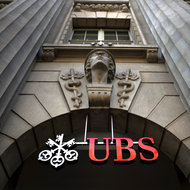Time Inc. joined the many news organizations that are trying to tighten their belts in a tough advertising climate by announcing layoffs and offering employees buyout packages on Wednesday.
In a memo, Laura Lang, chief executive of Time Inc., said that she planned to reduce the company’s worldwide staff of 8,000 employees by 6 percent, or about 480 employees. Ms. Lang stressed that the cuts would extend beyond New York and that it was hoped they would help Time Inc. better make the transition to the digital world.
“They come from all areas of Time Inc. across our locations — both domestic and international,” Ms. Lang said. “We must continue to transform our company into one that is leaner, more nimble and more innately multiplatform.”
Editors at People and Time magazines announced buyout packages Wednesday morning and other magazines are expected to follow with announcements throughout the day.
In a memo to his staff, Larry Hackett, editor in chief of People magazine, said that he was seeking nine volunteers to accept severance packages. According to the memo, he specifically was looking for three writers and six reporters or researchers to volunteer to take packages.
Mr. Hackett said in his memo that volunteers must apply by Feb. 13. “If necessary, we will then follow the guild contract procedure for conducting involuntary layoffs in these guild categories,” he added, referring to the Newspaper Guild, the union representing Time employees.
At Time, Richard Stengel, the magazine’s managing editor, said he was seeking two researchers, one staff writer and three copy editors to volunteer for severance packages.
Article source: http://mediadecoder.blogs.nytimes.com/2013/01/30/time-inc-to-reduce-global-staff-by-6-percent/?partner=rss&emc=rss






